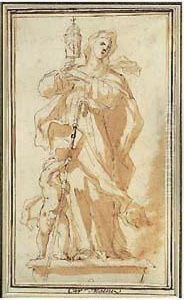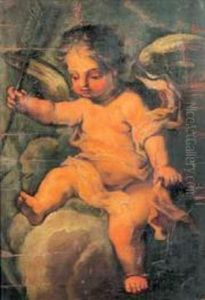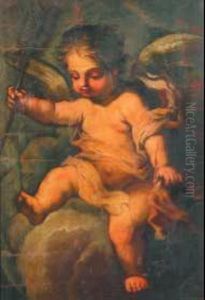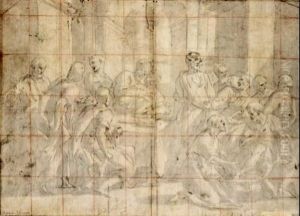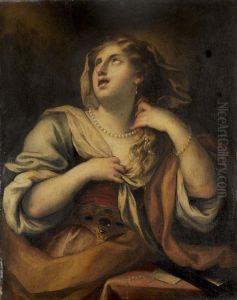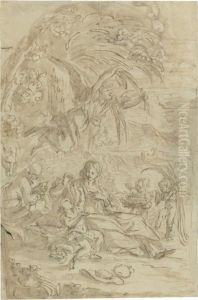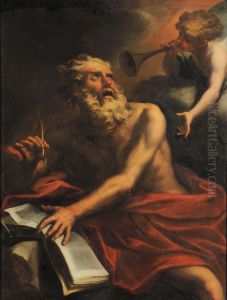Giovanni Raffaelo Badaracco Paintings
Giovanni Raffaelo Badaracco was an Italian painter who played a significant role in the Genoese Baroque movement of the 17th century. Born in 1588 in Genoa, Italy, Badaracco was deeply influenced by the flourishing artistic environment of his hometown. The city of Genoa during the late 16th and early 17th centuries was a bustling hub for artists, thanks to the patronage of the wealthy and powerful Genoese aristocracy. This environment provided a fertile ground for Badaracco's artistic development and would shape his career in significant ways.
His training began under the guidance of Giovanni Battista Paggi, a prominent painter of the Genoese school who had reintroduced a rigorous study of drawing and a fidelity to the High Renaissance and Mannerist traditions. Under Paggi's tutelage, Badaracco honed his skills and developed a style characterized by its precise draughtsmanship, keen attention to detail, and a vibrant use of color. These early influences are evident throughout his work, which encompasses religious subjects, portraits, and mythological scenes, executed with a naturalistic approach that was becoming increasingly popular at the time.
After completing his apprenticeship, Badaracco embarked on a successful career as a painter, receiving commissions from many of the leading families in Genoa. His works were appreciated for their elegance, clarity of composition, and the emotional depth he brought to religious themes. Notable works from this period include altarpieces for various churches in Genoa, as well as private commissions that showcased his versatility and skill in different genres.
Despite his success, Giovanni Raffaelo Badaracco has not achieved the same level of recognition as some of his contemporaries, such as Bernardo Strozzi or Giovanni Benedetto Castiglione. However, his contribution to the Genoese Baroque movement is undeniable. He played a significant role in the development of the Genoese painting tradition, influencing later generations of artists with his careful integration of naturalism and emotion.
Badaracco's legacy continued beyond his death in 1657, through the works he left behind and his influence on the Genoese art scene. His paintings can still be seen in various churches and collections in Genoa and beyond, serving as a testament to the skill, dedication, and artistic vision of this notable but somewhat overlooked figure in the history of Italian art.
